Computing adds wings to medicine
Yang Jianfei: Computational Medicine Promotes Accurate Clinical Trials.

Yang Jianfei, Chief Scientific Officer of Zheyuan Technology
Computational medicine needs to be composed of interdisciplinary teams and platforms. By integrating supercomputing system, AI platform, molecular and clinical data, massive literature and biological information, it can realize effective analysis and calculation of drug development and assist decision-making.
Taking an anti-tumor drug in our pipeline as an example, we read all the literatures of the target disease by using the "TWIRLS stick" of the computational medicine platform, first we have all the scientific knowledge known on the earth at present, and then we analyze the digital twins of patients in the patient database in a data-driven way to obtain the disease mechanism, specific targets and "portraits" of patients.
As we all know, the tumor is heterogeneous in time and space, and the immune system around the tumor is particularly complex. Therefore, only by having an accurate "portrait" of the patient’s tumor and accompanying diagnosis can we enter the stage of accurate clinical trials.
Through the computational medical platform, we established the response mechanism model of CDK4/6 inhibitor, and the effectiveness of this model was verified by the data of TCGA and Chinese patients. Then we put this drug currently used to treat breast cancer on the computational medical platform to study whether it has other applicable diseases. It was found that the model score of chordoma was very high, so we established cooperation with shanghai changzheng hospital and saw that some patients achieved partial remission in the third week after taking the drug. Although this drug has not yet entered the clinical trial stage, as long as it is carried out in accordance with the norms of computational medicine platform, we are confident to achieve truly accurate clinical trials.
Peng Ao: Behind the clinical success rate from 2% to 21%
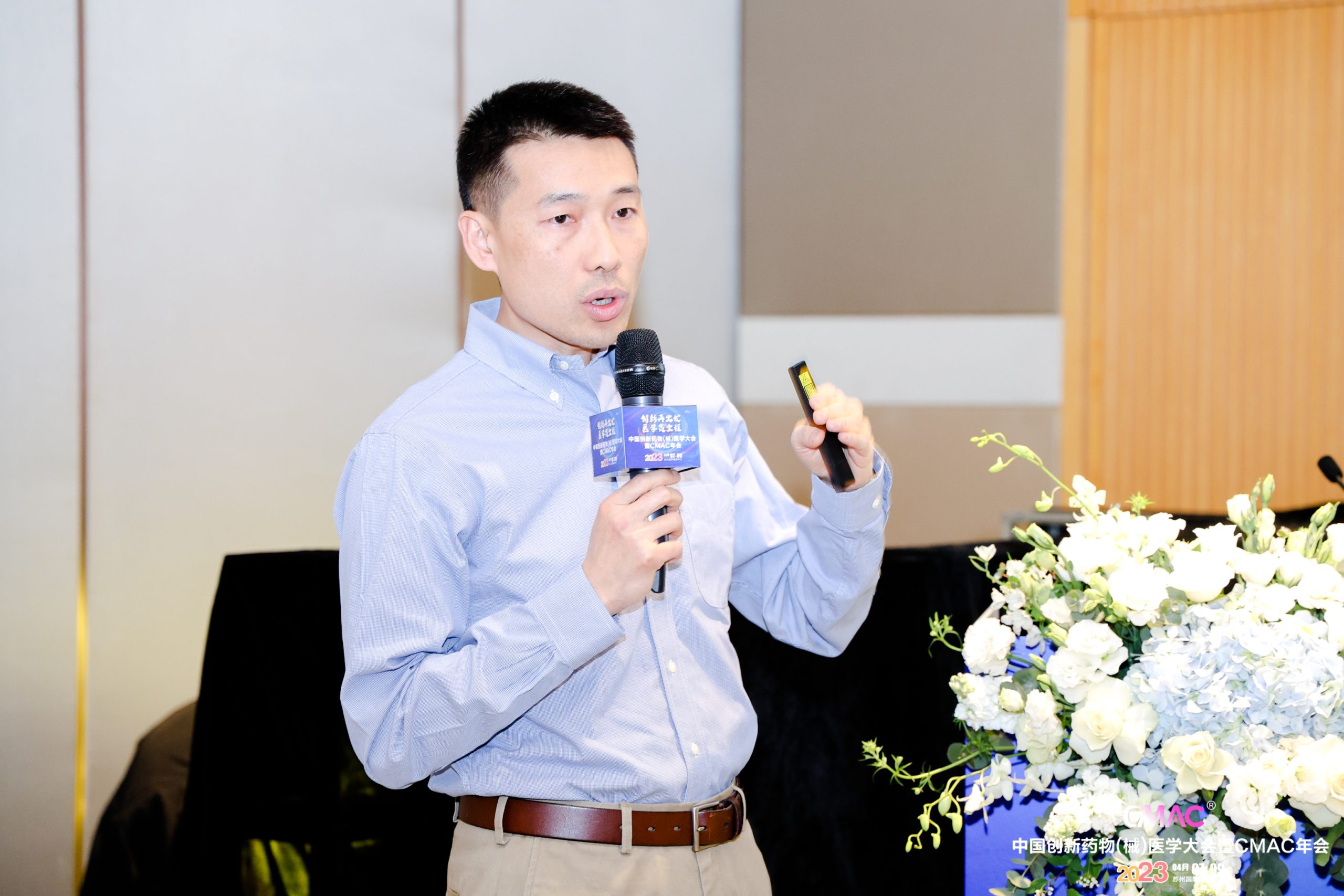
Peng Ao, Project Management Team Leader of Pfizer China Product Line
The efficiency of Pfizer’s new drug research and development has increased from 2% to 21%. I think we can sum up three experiences. First, accurate positioning, clear their own specific advantages in the field of biology. Pfizer currently focuses on internal medicine, immunity and inflammation, oncology drugs and vaccines. Second, choose the drug mode. At present, more complex and novel molecular entities account for more and more in our pipelines. Thirdly, the decision-making adheres to two principles. First, quantitative POM analysis is carried out in the first and second phase of the experiment, which can help the success rate of the second phase reach 40%; The second is to plan again. If the first direction of clinical research and development fails, then we will transform it and try again in another direction. If there is a very clear biological basis, our success rate can reach 31%.
Ertuglifozin is a SGLT-2 hypoglycemic agent, and a large number of technologies and methods related to computational medicine are used in its research and development, including systematic pharmacological model and Emax Model. Using this model, the highest hypoglycemic effect of the drug can reach 77%. Meta-analysis shows that the drug has the highest hypoglycemic level among similar products. This is a typical case of using model or computational medicine to guide drug research and development.
The US Food and Drug Administration has begun to build a framework for digital health tools. I believe that after the introduction of the framework, the guiding principles of the corresponding rules will also be introduced, which will guide the application of some new drug research and development more specifically and deeply.
Tang Yu: The insights generated by computational medicine need to be verified clinically.
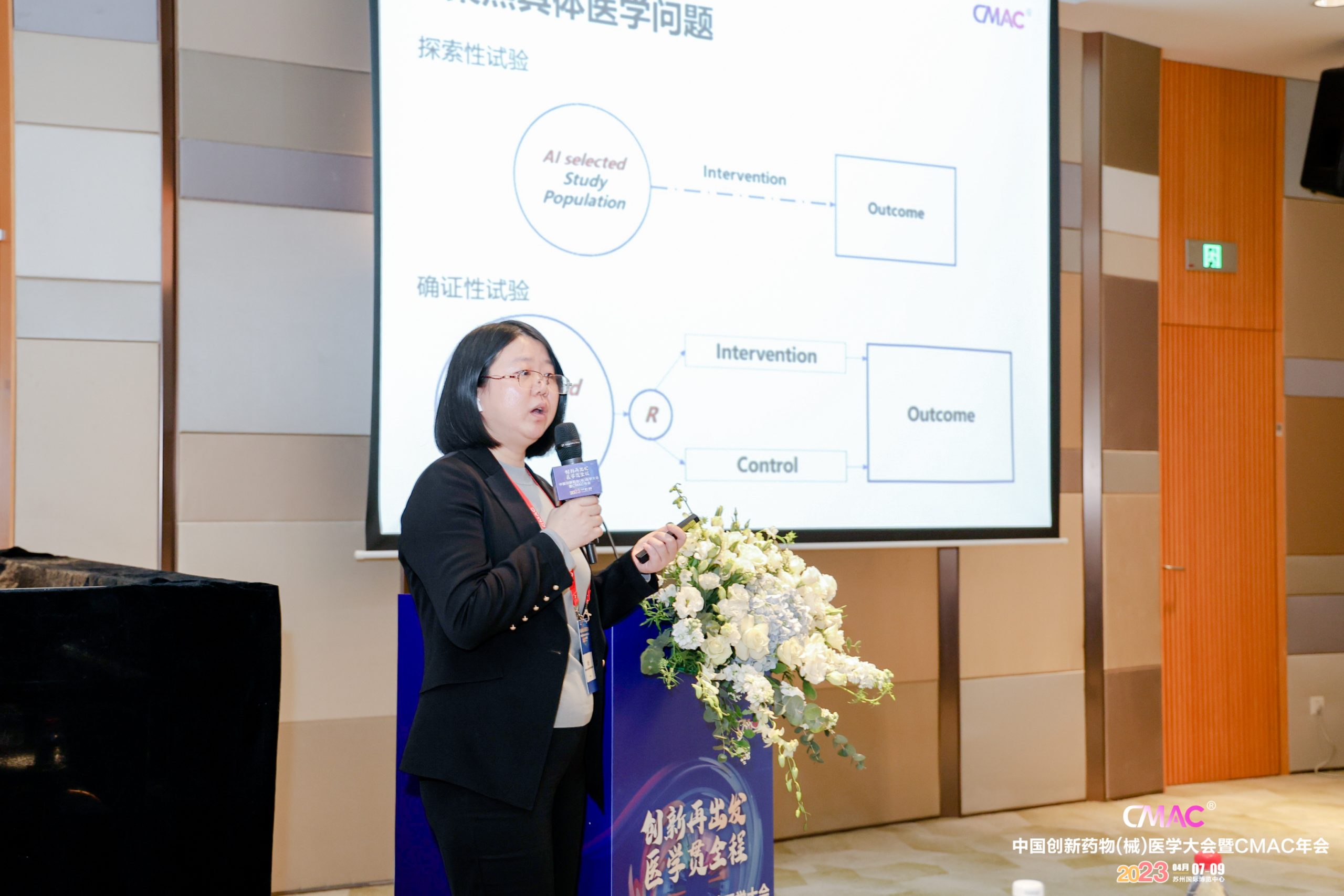
Tang Yu, Executive Director of the Office of Drug Clinical Trial Research Center, Cancer Hospital, China Academy of Medical Sciences
Computational medicine has produced a large number of insights by analyzing massive data, but how to prove that these insights are authentic and can be used in clinical practice through clinical trials?
The first case is to verify the specific answer given by computational medicine to a specific problem, such as verifying whether the first innovative drug under the guidance of AI can treat pancreatic cancer. The second is based on massive data to verify whether the treatment mode formulated by AI for individual patients or groups is better.
In the course of such an experiment, we need to consider several issues:
First, the consistency of the AI model. When we want to prove that an algorithm or an AI-based paradigm can guide medical care, we must ensure the consistency of the paradigm and not make it change irregularly.
Second, it is necessary to consider whether there is an accessible clinical treatment for a class of patients with more concentrated biological characteristics found by AI model. If there is no targeted treatment, although this model can guide the prognosis of patients, it is difficult to change the existing treatment methods.
Finally, establish a model that can not only explain the results, but also explain the mechanism, so as to better combine human wisdom with the wisdom of computer based on data integration.
At present, we are carrying out an umbrella research design, focusing on soft tissue sarcoma. Although the overall incidence of the disease is not high, there are nearly 100 subtypes. Our anti-vascular targeted drugs have shown excellent effects in individual subtypes, but the overall effect is still not ideal. Therefore, we hope to use Turing Darwin’s laboratory’s in-depth analysis of the whole sarcoma mechanism and digital twin technology to find drugs with ideal curative effect and high accessibility.
Niu gang: the big disease model changes the new paradigm of drug research and development

Niu Gang, Director of Turing Darwin Laboratory
In today’s medical field, we are committed to collecting and utilizing all kinds of disease-related data, looking for clues of logical unity for diseases, and establishing complex and real mechanism portraits. But the key lies in how to understand the so-called mechanism and who is the subject of the complex mechanism?
We have built and trained a brand-new AI method-"Genome Shotgun Damage Assessment Process" (DAGG). By inputting the sequence information of human germ line or tumor genome, AI can translate the sequence gobbledygook that human can’t understand into understandable changes in cell function.
According to the information of genome variation, clinicians can use DAGG to judge whether HER2 gene is amplified in tumor cells of breast cancer patients, so as to further clarify the pathological types of patients and provide clearer and more accurate judgments for patients’ diagnosis and treatment.
With the DAGG method, we can also transform the real patient data into the digital twins of the patient and his disease. With the large-scale accumulation of patients’ digital twins in virtual environment, we conducted a large-scale virtual clinical trial for PD-1/PD-L1 monoclonal antibodies. The results showed that the efficacy of most immunodrugs with indications was not ideal.
Therefore, the virtual clinical trial based on digital twins can replace the original clinical trial results that cost tens of billions of dollars. Based on the curative effect data of a small sample of individual indications, the potential indications of other tumor diseases can be inferred. At the same time, according to the biological mechanism directly suggested by the model, the combination scheme and even new molecules can be rationally designed, which saves many clinical development steps and costs and ensures greater benefits for patients.
Shi Rong: Computational Medicine Helps Accurate Diagnosis and Treatment of Breast Cancer
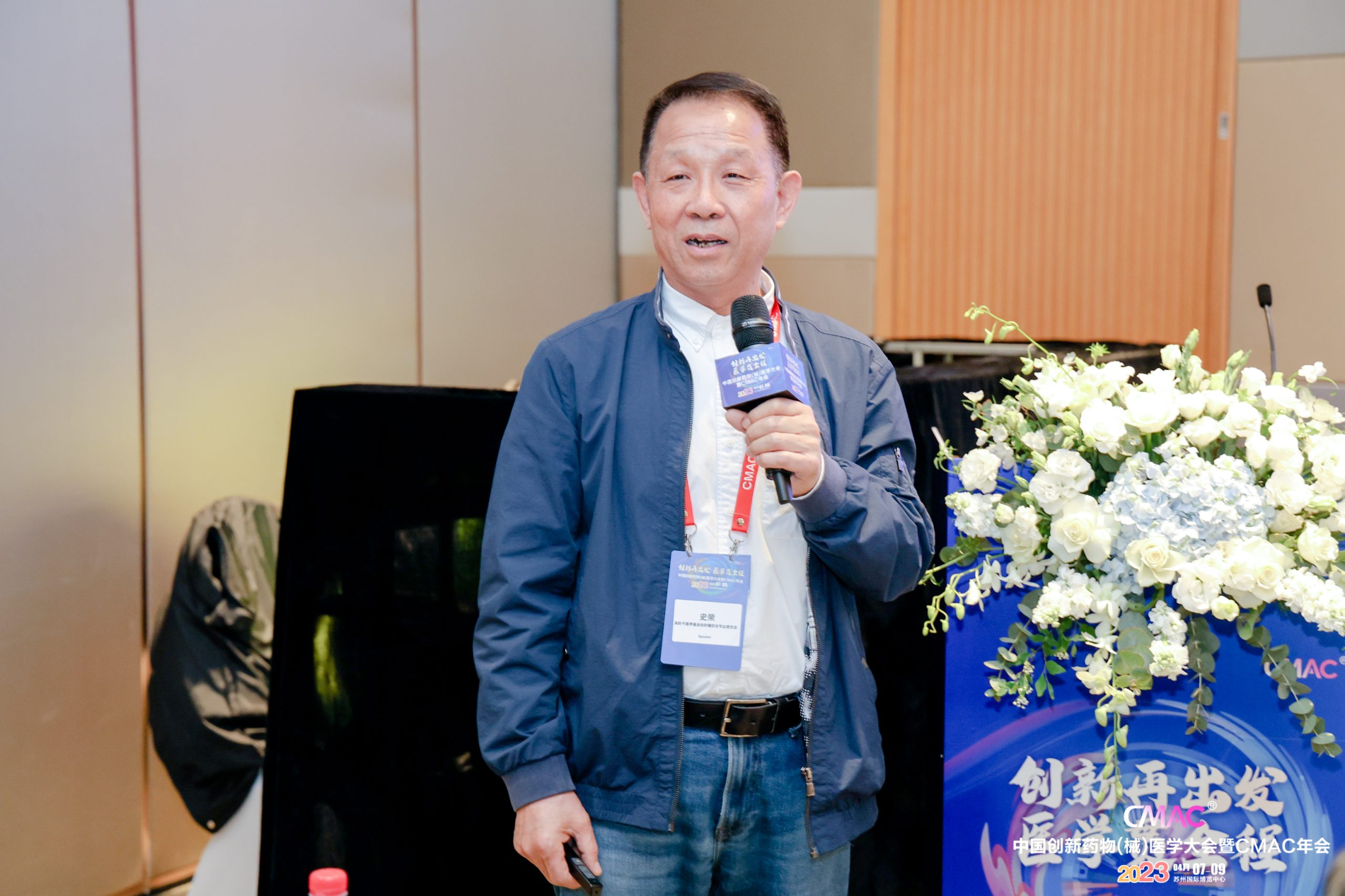
Shi Rong, Secretary General of Cancer Prevention and Treatment Committee of Wu Jieping Medical Foundation.
Breast cancer is the largest cancer in the world. HER2 is a definite prognostic indicator and a predictive indicator of drug treatment effect for breast cancer, but the tumor heterogeneity of HER2 expression is obvious, and the detection method of HER2 can not meet the demand of anti-HER2 treatment. Therefore, studying the etiology of the germ line carried in the germ line genome is not only helpful to deeply understand the pathogenesis of breast cancer, but also helpful to develop new methods and provide prospective judgment for subsequent treatment.
Recently, the artificial intelligence algorithm DAGG independently developed by the computational medicine team revealed the pathogenesis of breast cancer. It is found that the signal pathway function spectrum (APSP) can be obtained by using the DAGG model based on the germline fingerprint rare coding variation data. According to the difference in the distribution of APSP between patients and people with low etiology, a prediction model can be effectively constructed to evaluate the etiological risk of female individuals, and the HER2-positive and HER2-negative breast cancer patients can be effectively distinguished.
The clinical transformation path of breast cancer based on APSP is divided into three steps. The first step is to guide the clinical treatment plan based on the pathological classification of breast cancer by APSP. The second step, based on APSP, is the extremely early diagnosis of women with breast nodules and breast cancer with familial breast cancer genetic history, so as to reduce the proportion of breast cancer patients who enter advanced and advanced stages at the first diagnosis. The third step, breast cancer risk assessment of healthy population based on APSP, fills the gap of the lack of effective primary prevention measures for breast cancer in the world.
Jiang Min: Virtual clinical trial is a new paradigm in the future.
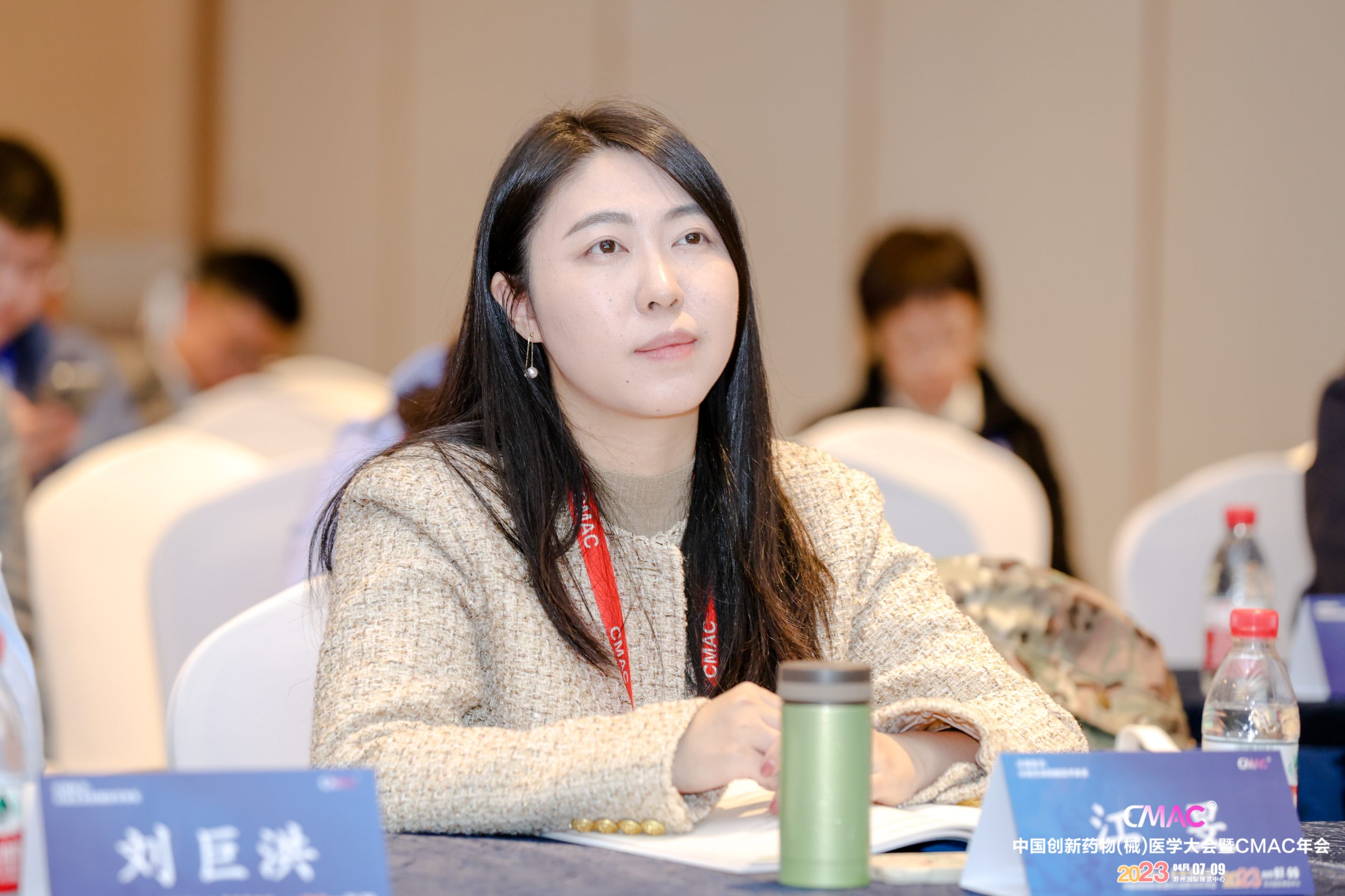
Jiang Min, Director of the Office of National Drug Clinical Trial Institution of Peking University Cancer Hospital
From a global perspective, there have been exploratory studies on virtual clinical trials, but retrospective cases are the main ones. Regarding whether we can carry out prospective virtual trial design and generate higher-level digital evidence to verify the computer simulation model, so as to better guide clinical research, Peking University Cancer Hospital and the computational medicine team collided from the perspectives of technology and experimental requirements, forming a real landing research.
The two sides jointly carried out a parallel virtual clinical research project by using the digital twin model of patients in computational medicine. The purpose of the research is to explore the relationship between the pathogenesis of tumor and the mechanism of anti-tumor drugs. Through the virtual clinical trial, the curative effect of anti-tumor drugs is predicted, and the characteristics and differences of patients are analyzed, so as to optimize the design of clinical trials. This study compares head-to-head with a real clinical study of registered new drugs to verify the consistency between the predicted results of virtual clinical research and the curative effects of real-world clinical trials.
Virtual clinical trial is a new paradigm in the future. With the support of computational medicine technology, the future clinical trial model may be transformed into more accurate clinical trial design, which will bring a more holistic drug research and development idea, which will bring revolutionary changes to the success rate and effectiveness of clinical trials.
Roundtable Forum I: Cognition and Evaluation of Non-consensus and Subversive Technology
Moderator: Li Lei, Associate Research Fellow of Frontier Science and Education Bureau of China Academy of Sciences.
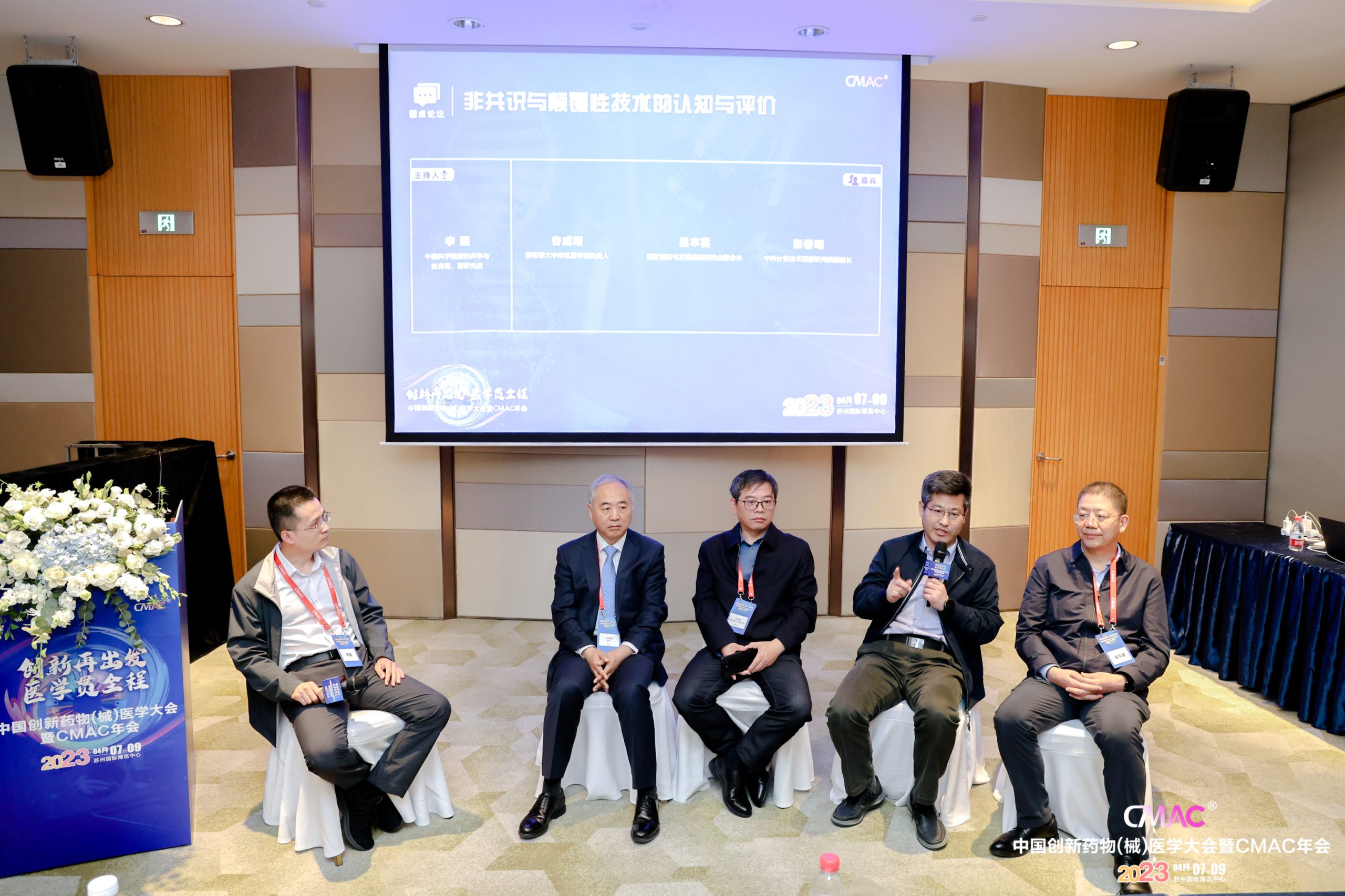
Roundtable forum site.
Lv Benfu (Professor, School of Economics and Management, Chinese Academy of Sciences)The so-called breakthrough innovation mainly depends on three points. First, whether a brand-new track has been developed; Secondly, on the original track, whether its performance-to-value ratio conforms to the law of ten times speed; Third, whether it belongs to the pattern innovation from 0 to 1 depends on the support of industrial policies.
Gu Chengming (Head of Sanofi Greater China Medical Department)The non-consensus stage is the primary stage. As long as it is accepted by the industry, it is considered as consensus, or it is available, which can solve some problems. However, in the field of drug research and development, if you want to be a First-in-Class, it must be a non-consensus. If you become a consensus, it will be Me too.
Zhang Chunming (Vice President of the Western Research Institute of Computing Technology, Zhongke)From a practical point of view, today’s world structure does not support small steps forward, and we must give full play to the ability of large-scale team operations. In terms of innovation, it is indeed possible for computational medicine to open up a brand-new track, so any government department should carefully evaluate it.
Weng Huajian (deputy head of Changning District, Shanghai)In 2021, I first learned about computational medicine. At that time, we envisaged to set up a life science innovation center between Suzhou and Shanghai, specializing in high-end research and development, focusing on computer +Inside and AI+, so as to give full play to the accumulation of digital economy in Changning, Shanghai in the past 20 years, especially the accumulation advantages of talents and innovation ecology. Therefore, from the perspective of the government, we are full of expectations for disruptive innovation technology in computational medicine.
Roundtable Forum II: Investment Logic from the Perspective of Computational Medicine
Moderator: translated by Hu Ming, partner of Mingde Capital.
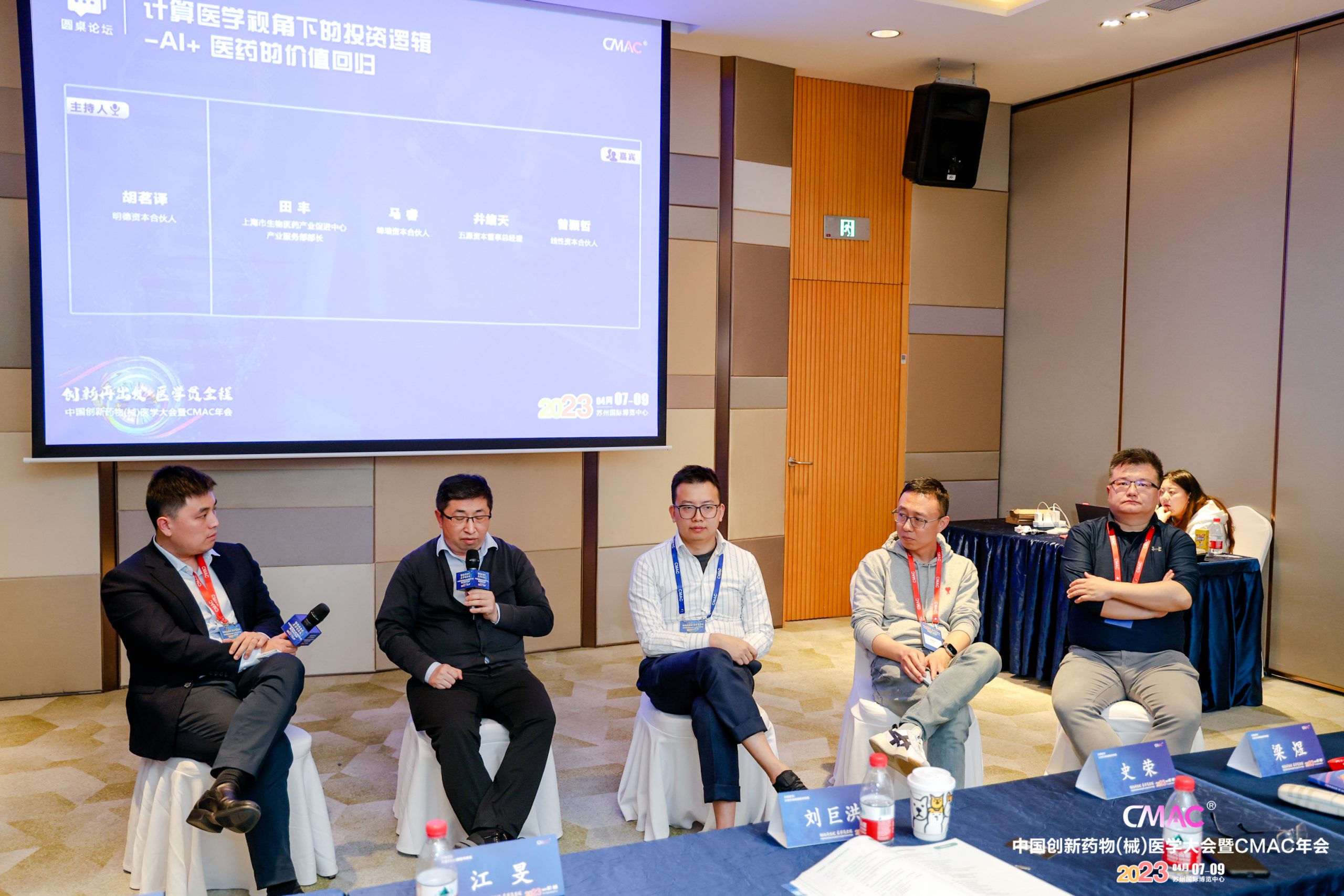
Roundtable forum site.
Tian Feng (Minister of Industry Service Department of Shanghai Biomedical Industry Promotion Center)The most noteworthy point of the whole AI+ pharmaceutical industry is to change from logical successful practice to probabilistic successful practice, and finally return to logical successful practice. From the perspective of AI+ diseases, developing virtual clinical trials, I think it can effectively reduce the cost of clinical development and improve the success rate in the future.
Jing Xutian (Managing Director of Wuyuan Capital): AI technology has brought some new algorithms and breakthroughs in computing power. In the past, many AI pharmaceutical companies paid more attention to the field of small molecules with the most data and the most mature data, but today we see that more and more algorithms are actually very suitable for doing some new modal drug discovery.
Zeng Yingzhe (Partner of Linear Capital)Before AI technology, we usually build low-dimensional models to solve high-dimensional problems, but the emergence of AI can solve these high-dimensional problems. With more and more data and more powerful computing power, the prospect of AI pharmaceutical is very broad. At present, we are observing what progress the big language model will bring to AI pharmaceutical. It is exciting that some new progress has been made in the field of molecular characterization algorithms.
Ma Rui (partner of Fengrui Capital)We always overestimate the progress of computational medicine in five years, but underestimate the progress it can bring in ten years. I think that in the next three years, macromolecular protein drugs will basically be subverted by AI, just like AlphaFold in 2021 completely solved the problem of structural prediction of single domain proteins. (Photo courtesy of the organizer)